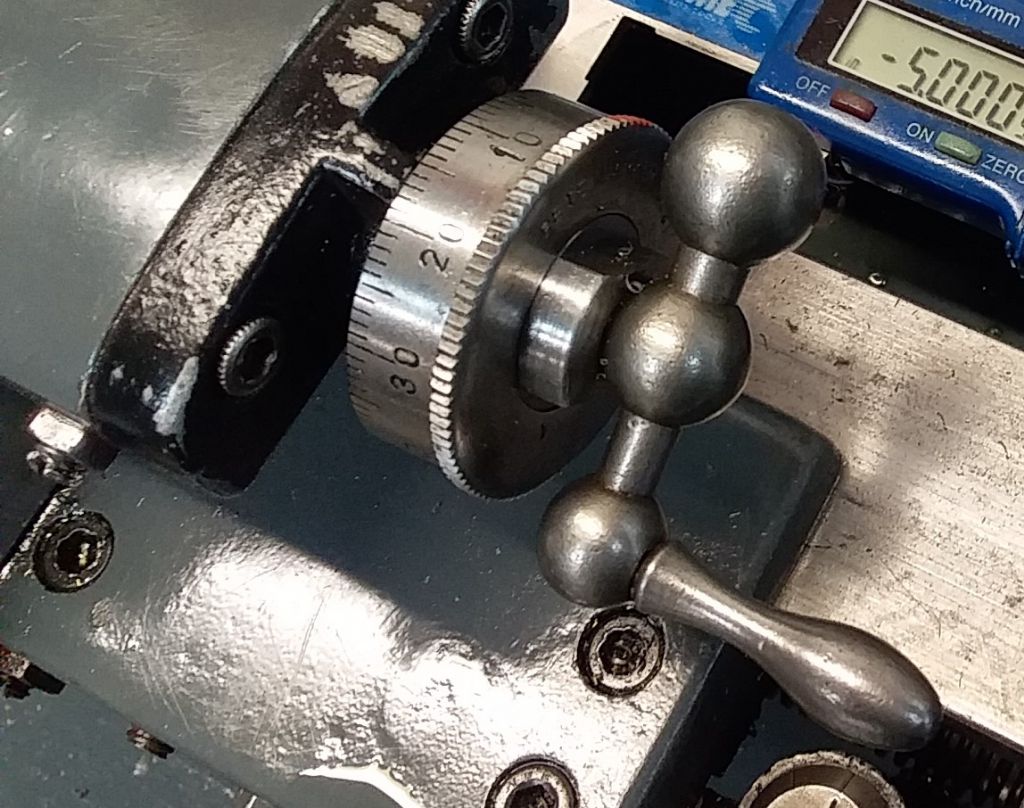Thanks for the all replies.
My primary concern is to get the lathe cleaned up and back running, think exploded view – just a lot less organized. Hence back to original dial fitting which is simple, in it's time very cost effective and not bad design engineering imo. It solves:
Adding a dial and fixing it.
Adding a handle and fixing it.
Locking the cross feed screw in place and setting its tightness using the dial and locking it all with the handle.
All this for just 3 components (washer, dial, handle). The drawbacks in this solution are: a handle on a thread (can unscrew) that relies on the soft metal of the dial to 'bite' and fix the whole thing, so limited lifespan.
I would like to have an adjustable dial working but the current version is not my kind of engineering:
The back plate with the marker is loose and the small holes to hold it are elongated so it can move about a mark. This is part due to poor drilling and it being part of the tightening of the whole screw/dial/handle system.
The stud with the 2 set screws is threaded and the set screws forced into the cross feed screw, so to screw the handle on as the last bit the feed screw has to be grabbed with a pair of plies on the other side of the bracket and tightened a lot, not to unscrew in use – all force through the set screws. This is probably what caused most of the damage to the thread.
A future project could be to use the marker and dial plates and make a better solution.
Howard Lewis.








